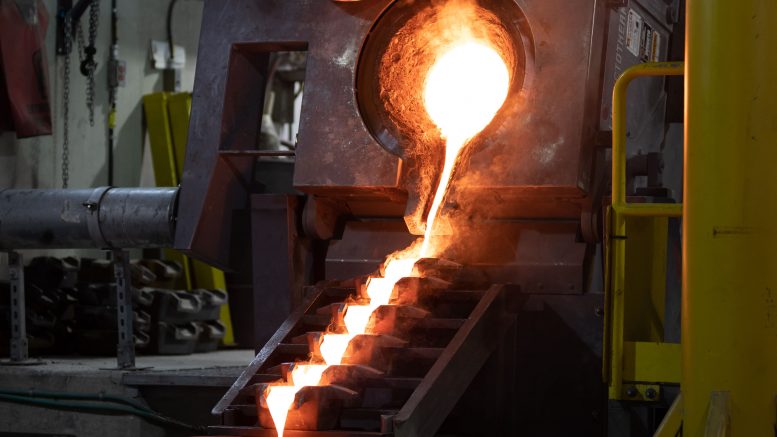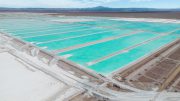There are several key elements to having a rational view of likely price movements in precious metals in 2023.
The first is accurately understanding what has happened in these markets in 2022 and where they stand as the year begins.
The second is forming a sober, fact-based opinion about what has happened, where we stand at the start of 2023, and what is likely to happen in 2023 in the global and national economies, financial markets, and the political realm.
The reality is that gold and silver showed strength in the first quarter of 2022, pushed higher by investment demand fuelled by concerns over inflation, effects of interest rate increases on the overall economy, and recession. The Russian invasion of Ukraine at the end of February fuelled that. Platinum and palladium rose initially in response to the Russian invasion but then fell back.
As 2022 proceeded, several key things did and did not happen.
- Inflation rates began to subside slowly, as monetary authorities and mainstream economists had predicted. This was in stark contrast to the arm-waving of gold and silver promoters, who continue to pontificate that inflation will skyrocket well into double digits, and indeed already is that high ‘if measured properly.’
- Interest rates rose sharply throughout the year, but remained lower than they were throughout the years of strong economic growth of the 1970s–1990s. The reality set in that interest rates, virtually zero at the start of 2022, could rise sharply without choking off economic growth.
- Following the realities of the interest rates, the world did not plunge into a recession.
These and other factors such as strong jobs growth, rising real earnings, strong industrial production, and slowly recovering world trade all kept the bears at bay, at least for 2022.
So what does 2023 and beyond hold in store?
- Inflation will continue to trend lower. Some cyclical factors and inflationary pressures brought about by the lockdown and subsequent economic recovery are dissipating. Other shorter term cyclical trends continue to pressure prices higher. Other longer term secular changes in the U.S., Canadian, and global economies continue to exert upward pressures on prices. Special events, from the Russian war in Ukraine to the on-going bifurcation of China’s economy from most of the world, will continue to exert inflationary pressures, slowing the pace of reduction in price increases over the next few years.
- Interest rates are likely to rise at least through the first quarter of 2023, before plateauing. Rates are likely to start declining slowly toward the end of 2023 as recessionary pressures increase.
- A recession is coming. It is important to note that the major factors that will cause a recession in the near future will be fundamental supply and demand trends in the ‘real’ economy and fiscal policies. Monetary policy will not throw the U.S. or industrialized world into a recession, and will only play a distant third supporting role in the drama. Blame the politicians who muck with fiscal policy and who borrow and spend. And blame the free market economics that allow for a continual warp and woof of supply and demand overshooting each other’s equilibrium levels over the centuries.
That will be the economic environment in 2023. Add to it the likelihood of another Russian offensive, possibly not until spring, unless Ukraine pre-empts it with an earlier offensive. Also add to it a host of political and social issues of growing volatility in virtually every major corner of the world.

Jeffrey M. Christian
Yes, a recession is coming. That is 100% certain. The questions are when it will arrive, how it will be triggered, how long it will last, and how deep and damaging it will be. The mainstream consensus, and CPM’s own opinions or best guesses are that 2023 will see extremely low, virtually flat economic growth in the industrialized nations.
A recession may not start until the fourth quarter of 2023 or sometime in 2024. It may be a big one and last into 2025. Obviously, it will have important consequences for precious metals, probably stimulating higher gold and silver investment demand and prices while limiting any recovery in global auto markets, limiting platinum and palladium prices.
Gold
While many gold bugs have whined all through 2022 that gold prices were ‘low,’ the reality is that the gold price is heading to a record annual average high around US$1,804 per oz. (through November).
Investors continued to buy large amounts of gold, roughly flat from 2021. They had earlier pulled back from buying so much gold in 2018 (16.1 million oz.) and in 2019 (17.1 million oz.). As the pandemic, global lockdown, and global recession hit in 2020, investors increased their purchases to around 39.9 million ounces. In 2021 and 2022 investors bought 26.4 million and 26.7 million oz., respectively. This was down from the very high 2020 level, but very much greater volumes than in 2018 and 2019.
Central banks have been buying gold too, diversifying their monetary reserves. Most central bank reserves are in U.S. dollars, around 60% of total foreign exchange reserves. Many financial market participants have expected the dollar to decline, possibly sharply. Instead the dollar rose sharply for the first 10 months of 2022. The dollar declined some in November and early December, but remained above pre-2022 levels. In this environment some central banks took advantage of the strong U.S. dollar and used some of their reserves to buy gold and other currencies.
Mine production and total supply have been relatively flat while jewelry demand has risen.
In 2023 investors are expected to keep the pace of gold buying they have maintained in 2021 and 2022. They may increase their demand somewhat from that level, depending on how economic, financial, and political issues evolve. Central banks are similarly expected to continue adding gold to their monetary reserves. Mine production and secondary recovery are projected to rise modestly in a subdued global economic environment.
Gold and silver prices are determined primarily by investment demand, which is determined primarily by factors exogenous to gold and silver markets.
It really is uncertainty, of various forms, that flavour investor demand.
Inflation, interest rates, currency markets, equity and bonds, political stability, bank and financial market stability, etc. are what determine whether investors want more or less gold and silver.
Investment demand determines gold prices. Gold prices determine mine production, secondary scrap recovery, and fabrication demand.
Putting these fundamentals together and weighing them against the macroeconomic and political environment that influences investment demand, it seems most likely that the gold price may trade in a US$1,700-US$1,900-per-oz. range, similar to the last three quarters of 2022. Prices are expected to rise more sharply in 2024, when CPM expects a full-blown recession, debt market issues, and other factors to trigger stronger investor demand.
Silver
Silver prices fell in 2022. As of Dec. 15, the average for the year is US$21.72 per oz., down nearly 14% from the 2021 full-year average price. Prices are expected to recover somewhat in 2023, possibly trading between US$20 and US$28. Higher prices are projected beyond 2023, for all the same reasons gold is forecast to rise.
The lower price in 2022 was due to investment demand — the same market segment that’s expected to lift prices next year.
After investors lost interest in 2017-2019, silver prices declined. Investment demand and prices began to recover in mid-2020. Investment demand rose from 37.3 million oz. in 2019 to 65.3 million oz. in 2020, and then to 105 million oz. in 2021. That took prices higher.
The silver market became infected with marketing hype in 2020 and 2021. Marketeers were promising that silver prices, which touched US$11.77 per oz. in the first half of 2020, would soon be US$50, US$100, US$750, or even higher. None of those price levels could be supported by silver’s supply and demand fundamentals, but like crypto investors, many silver investors are hell-bent on ignoring reality. The unrealistic price predictions came with laughable concepts like having small investors buying so much silver that the international silver bullion market ‘ran out’ of silver and ‘imploded.’ Some investors bought the entire charade.
The investor silver mania pushed silver prices to US$30 per oz. briefly in both 2020 and 2021. And then market fundamental realities kicked in. Prices averaged US$16.23 in 2019, rising to US$20.67 per oz. in 2020 and then US$25.28 in 2021.
And then it ended. Silver prices rose, based on fundamentals in 2020, before the ‘Wall Street Silver’ nonsense started. Silver prices did not reach unrealistic astronomic heights. The Comex did not experience any default, the global bullion market did not run out of silver. And prices fell from around US$28-US$30 per oz. to as low as US$17.67.
Some of these investors realized they had been had and left the silver market, selling metal behind them.
Investment demand dropped from around 105 million oz. in 2021 to around 84 million oz. in 2022. It is projected to decline further, maybe to around 74 million oz., in 2023. Silver prices, as stated above, declined 14% on an annual average basis in 2022. They are projected by CPM to recover around 6.7% or so in 2023.
Platinum Group Metals
PGM markets are most heavily influenced by auto industry demand for platinum, palladium, and rhodium for use in catalytic converters. There are several trends that are pulling these metals’ prices in different directions.
- First, the global auto industry has been in a slump for several years, due to the pandemic, lockdowns, shifts in consumer interest in owning cars, supply chain difficulties in securing components, and other issues.
- Second, electric vehicles are now taking roughly 10% of the market, reducing demand for all PGMs in their largest industrial use, by the same amount. This is a long-term trend negatively affecting all PGM prices.
- Within the petroleum-fuelled auto industry there has been a shift back toward using more platinum and less palladium per vehicle.
Palladium has been at a premium to platinum for several years during which the auto industry undertook the engineering and design work to allow it to shift back toward using more platinum and less palladium.
That shift began in earnest around 2019, but has been interrupted or masked by the lockdown and a sharp decline in auto sales.
As a result, platinum prices are expected to rise over the next few years while palladium prices are projected to decline further even as the auto markets revive.
—Jeffrey M. Christian is the managing partner of CPM Group, a commodities research and management consulting and financial advisory firm in New York. He founded the company in 1986, spinning off the Commodities Research Group from Goldman Sachs & Co., and its commodities trading arm, J. Aron & Company.






Be the first to comment on "Precious metals outlook: CPM Group sees sharp rise for gold — but not until 2024"